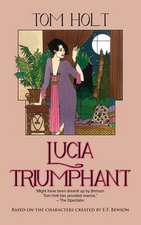The Collier's Weekly Version of the Turn of the Screw
Autor Henry James Editat de Peter G. Beidleren Limba Engleză Paperback – 18 ian 2010
Preț: 93.59 lei
Nou
Puncte Express: 140
Preț estimativ în valută:
17.91€ • 19.47$ • 15.06£
17.91€ • 19.47$ • 15.06£
Carte disponibilă
Livrare economică 31 martie-14 aprilie
Preluare comenzi: 021 569.72.76
Specificații
ISBN-13: 9781603810180
ISBN-10: 1603810188
Pagini: 236
Dimensiuni: 152 x 229 x 14 mm
Greutate: 0.29 kg
Editura: Coffeetown Press
ISBN-10: 1603810188
Pagini: 236
Dimensiuni: 152 x 229 x 14 mm
Greutate: 0.29 kg
Editura: Coffeetown Press
Notă biografică
Henry James (1843 - 1916) was an American-born British writer. He is regarded as one of the key figures of 19th-century literary realism. He was the son of Henry James, Sr. and the brother of philosopher and psychologist William James and diarist Alice James. He is best known for a number of novels showing Americans encountering Europe and Europeans. His method of writing from a character's point of view allowed him to explore issues related to consciousness and perception, and his style in later works has been compared to impressionist painting. His imaginative use of point of view, interior monologue and unreliable narrators brought a new depth to narrative fiction.




















